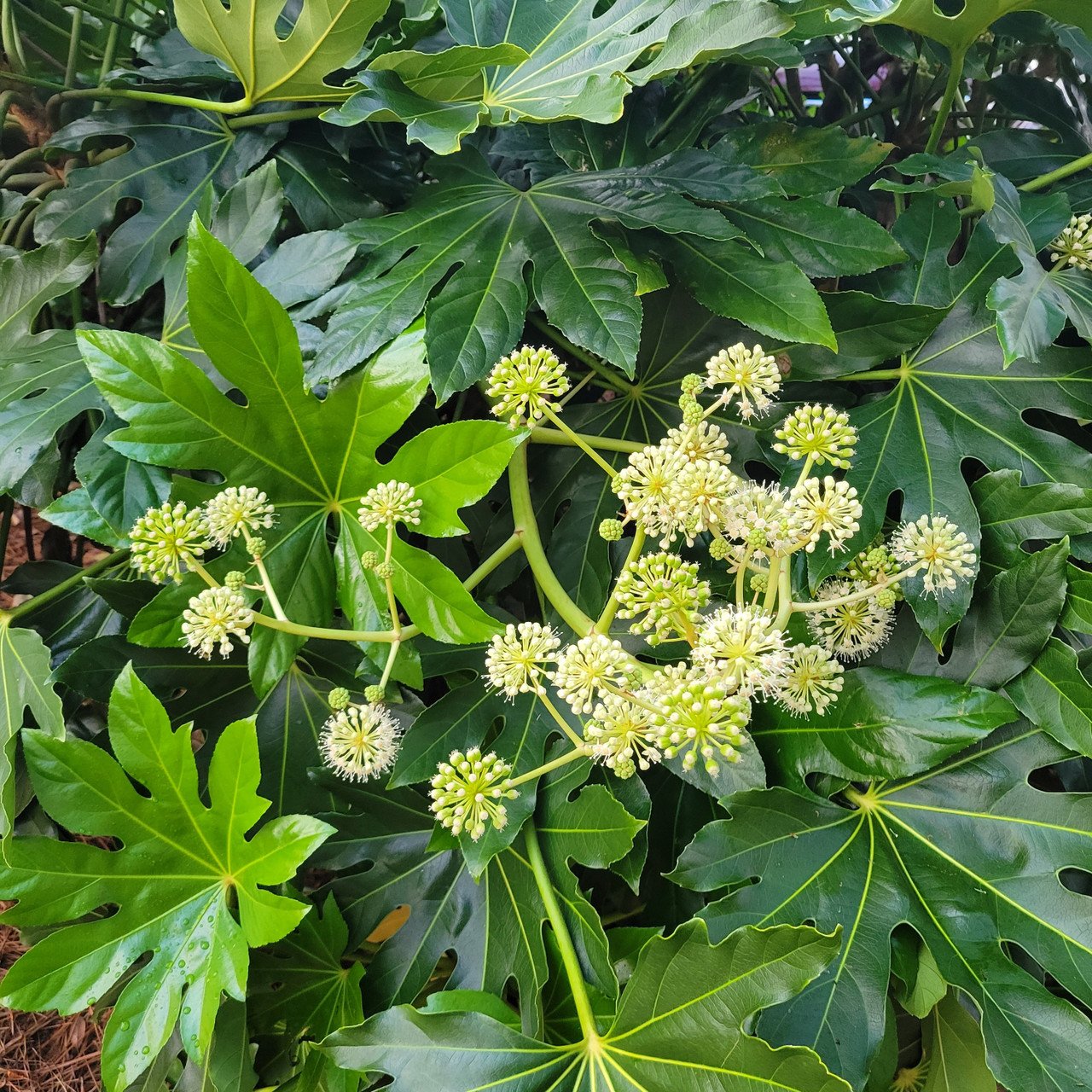

Fatsia Japonica | Paperplant
Fatsia japonica, commonly known as Japanese Aralia or Paperplant, is a striking evergreen shrub native to Japan and Korea. It belongs to the Araliaceae family and is widely appreciated for its bold, architectural foliage and ease of cultivation.
Key Characteristics:
Foliage: Its most notable feature is its large, glossy, palmate leaves, which can grow up to 16 inches (40 cm) wide. Each leaf typically has 7–9 deeply lobed segments, giving it a tropical appearance.
Growth Habit: Fatsia japonica is a fast-growing plant, typically reaching heights of 4–8 feet (1.2–2.5 meters) and spreading just as wide. Its upright, bushy form makes it a popular choice for garden borders or as a statement plant.
Flowers and Fruit: In late autumn or early winter, it produces small, creamy-white, spherical flowers arranged in clusters. These flowers are followed by small, black berries that attract birds.
Hardiness: It is hardy in USDA zones 7–10 and thrives in mild climates. Fatsia japonica is particularly tolerant of shade and makes an excellent choice for shady corners or as an indoor houseplant.
Growing Conditions:
Light: Prefers partial to full shade but can tolerate some morning sun. Direct sunlight may scorch its leaves.
Soil: Thrives in moist, well-drained soil with organic matter. It can tolerate clay or sandy soils with adequate care.
Watering: Requires regular watering, especially during dry spells, but it should not be waterlogged.
Pruning: Minimal pruning is needed, though occasional trimming helps maintain its shape.
Uses:
Fatsia japonica is valued for its ornamental appeal, adaptability, and low maintenance requirements. It is frequently used in landscaping, as a container plant for patios, or as a lush indoor feature.
With its exotic yet robust nature, Fatsia japonica is a versatile addition to gardens and indoor spaces alike.
4o
Fatsia Japonica | Paperplant
Fatsia japonica, commonly known as Japanese Aralia or Paperplant, is a striking evergreen shrub native to Japan and Korea. It belongs to the Araliaceae family and is widely appreciated for its bold, architectural foliage and ease of cultivation.
Key Characteristics:
Foliage: Its most notable feature is its large, glossy, palmate leaves, which can grow up to 16 inches (40 cm) wide. Each leaf typically has 7–9 deeply lobed segments, giving it a tropical appearance.
Growth Habit: Fatsia japonica is a fast-growing plant, typically reaching heights of 4–8 feet (1.2–2.5 meters) and spreading just as wide. Its upright, bushy form makes it a popular choice for garden borders or as a statement plant.
Flowers and Fruit: In late autumn or early winter, it produces small, creamy-white, spherical flowers arranged in clusters. These flowers are followed by small, black berries that attract birds.
Hardiness: It is hardy in USDA zones 7–10 and thrives in mild climates. Fatsia japonica is particularly tolerant of shade and makes an excellent choice for shady corners or as an indoor houseplant.
Growing Conditions:
Light: Prefers partial to full shade but can tolerate some morning sun. Direct sunlight may scorch its leaves.
Soil: Thrives in moist, well-drained soil with organic matter. It can tolerate clay or sandy soils with adequate care.
Watering: Requires regular watering, especially during dry spells, but it should not be waterlogged.
Pruning: Minimal pruning is needed, though occasional trimming helps maintain its shape.
Uses:
Fatsia japonica is valued for its ornamental appeal, adaptability, and low maintenance requirements. It is frequently used in landscaping, as a container plant for patios, or as a lush indoor feature.
With its exotic yet robust nature, Fatsia japonica is a versatile addition to gardens and indoor spaces alike.
4o